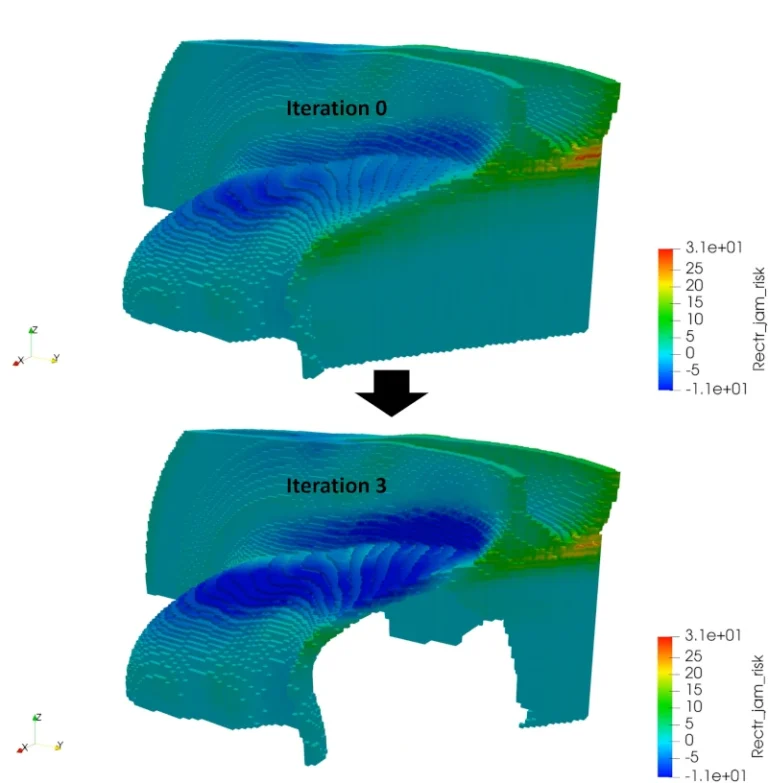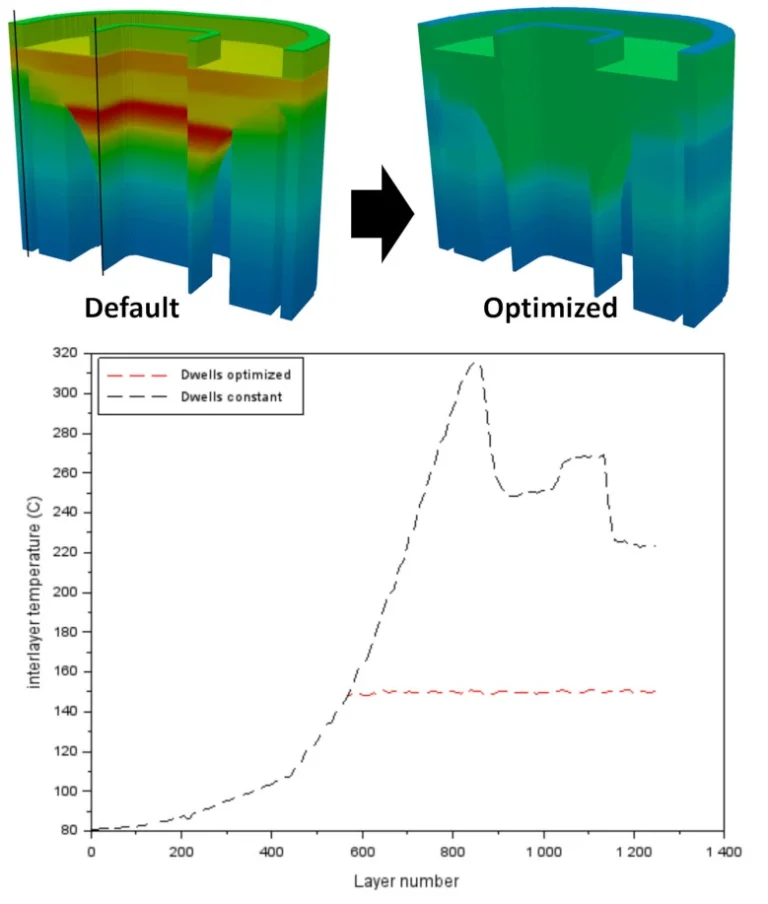Additive Manufacturing Optimization of Any Thermal or Mechanical Build Issue at Any Scale
Adjoint sensitivity driven optimization enables fast physics based optimization for large scale additive parts. Any model input can be optimized.
Thermal Dwell Optimization
Power Optimization (Beta)
Support Structure Optimization (Alpha)
Interlayer Temperature Optimized Support Structure
PanX uses adjoint sensitivities to drive support structure optimization.
The criteria in this example is to keep interlayer temperatures below a target threshold, while using minimal support material
This optimization converged after 8 iterations, taking only 31 seconds on an 8 core laptop


Recoater Clearance Optimized Support Structure
The criteria in this example is to keep interlayer recoater clearance risk below a target threshold, while using minimal support material
Note that the recoater clearance actually risk decreases
This optimization took 8 minutes to converge on an 8 core laptop

